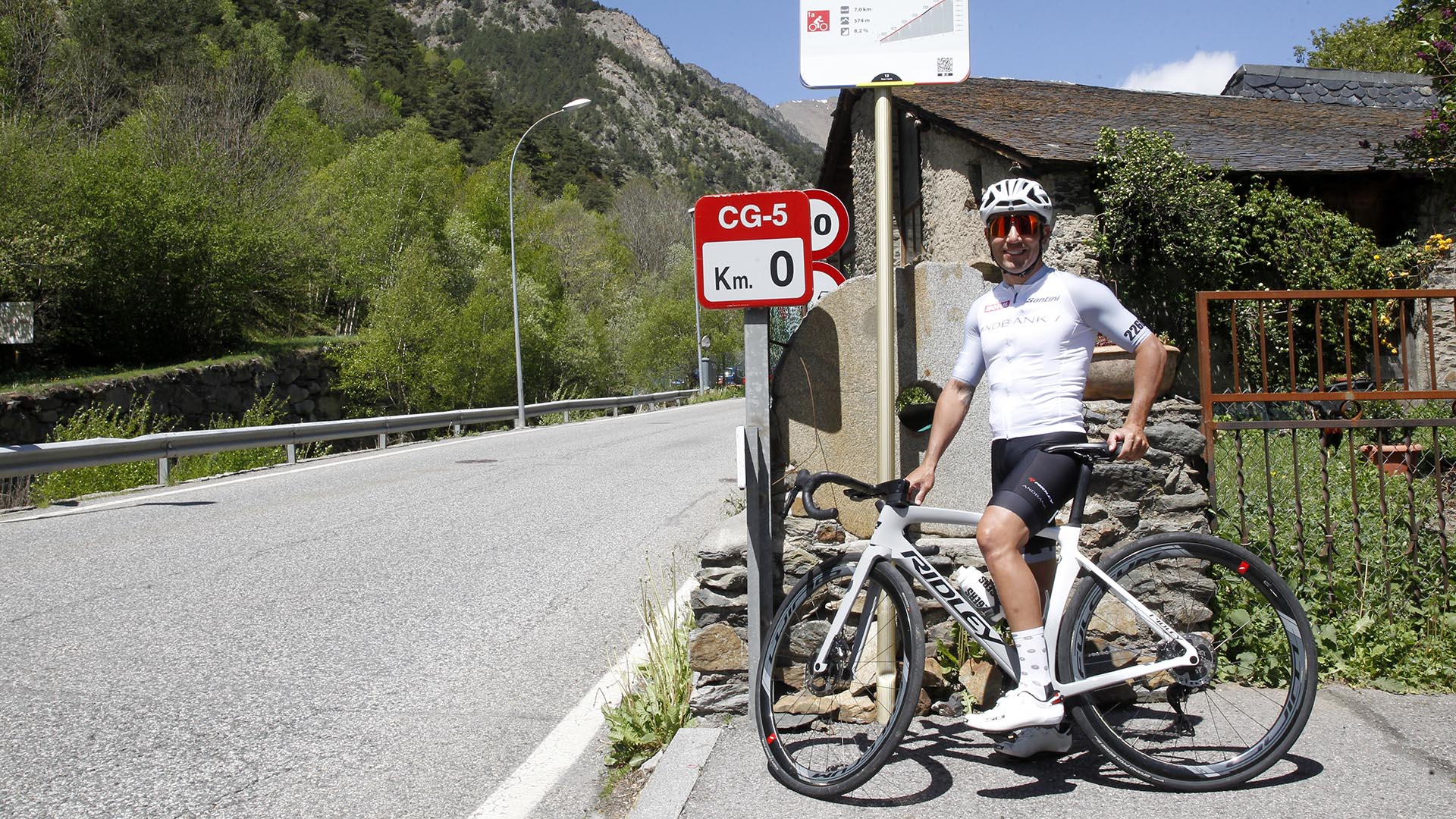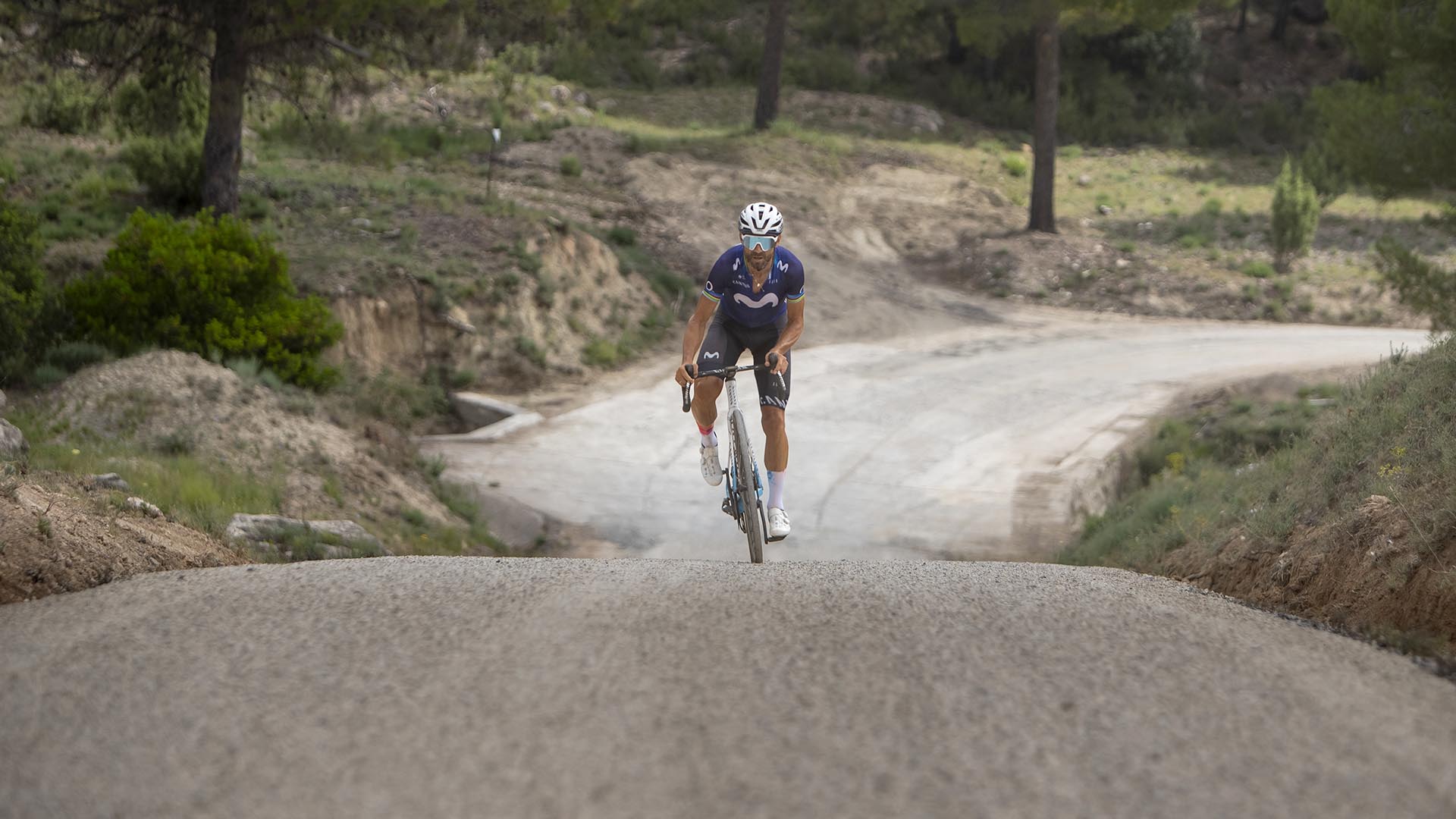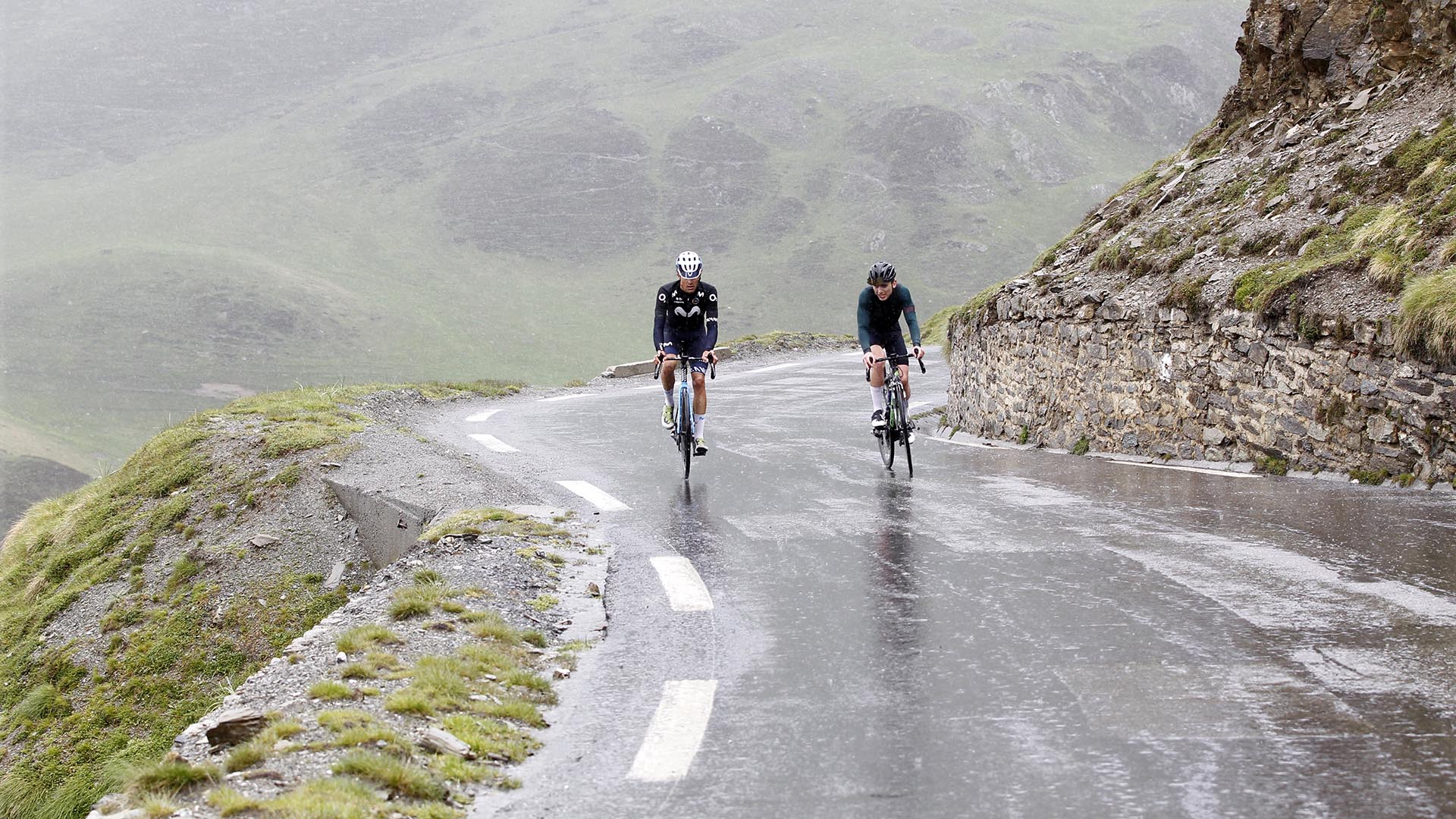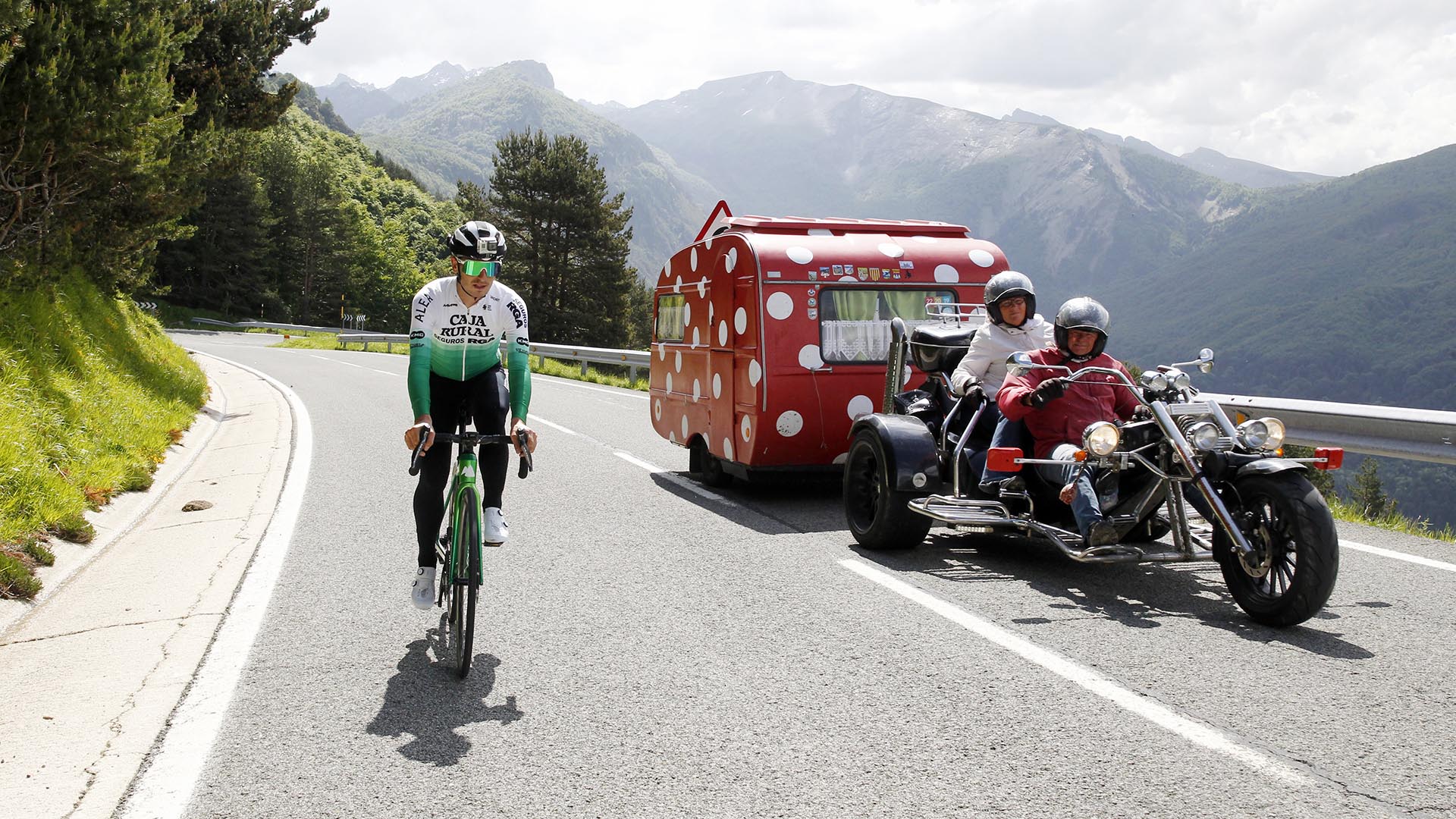By
The 78th edition of the Tour of Spain, how could it be otherwise, will not miss its appointment to discover new ports. The route of the Spanish round presents a total of six unprecedented high-altitude finishes, some of which are world renowned, such as the Tourmalet, and others that are more unknown to the general public. The showcase is unbeatable: several of the best cyclists on the planet climbing Spanish ports that will make themselves known and experience a before and after.
The poster for La Vuelta 2023 is unbeatable: Jonas Vingegaard, Remco Evenepoel, Primoz Roglic, Juan Ayuso, Geraint Thomas… And the route lives up to it, never better said. Arinsal, Bejes, Cruz de Linares, Tourmalet, Larra-Belagua and Caravaca are the six ascents that will host a stage finish for the first time in the history of the Spanish round. Ports that breathe cycling, that promise to offer a great show and, why not, come to stay. In the months prior to the start of the test, AS went to recognize them with professional runners and ex-cyclists familiar with those ascents that will be some of the great attractions. They gave their keys and impressions of the surprises of La Vuelta 2023.
The first hilltop finish of the Vuelta a España will not be long in coming. It will arrive in the third stage, in which the race will enter its usual foray into Andorran lands. Day in which the terrain will be ascending from the start in the Catalan town of Súria, and which will have as its main attractions the Coll d’Ordino, a classic of the Spanish round, and the final climb to Arinsal. A not too long ascent (6.8 kilometers at 8.3% on average), but explosive, which will select the race for the first time.
“It’s a pretty tough port, a classic in Andorra for the training of those who live here,” said Joaquim Rodríguez, in charge of recognizing Arinsal for AS. Its 13% sections, accompanied by horseshoe curves, can make a dent in more than one, and even more so so soon, when some are still ‘activating’ their bodies in the opening days of the race. “The most explosive will triumph,” said Purito.
The day prior to the first day of rest will run through Murcia, and will end on the demanding ramps of the Collado de la Cruz de Caravaca (8.2 kilometers at 5.5%) in an unprecedented climb, which will put the cyclists’ legs to the test. due to its stratospheric percentages with slopes of 20%. It is a broken ascent, in which the hardness is concentrated in the final part with a kilometer at 12% and another at 9.5%.
“I thought it was less demanding because of the average unevenness it has, but what’s up”, said Alejandro Valverde after climbing this port for the first time in his life. The Murcian, who lives about 80 kilometers from Caravaca de la Cruz, where there were usually finals for sprinters, traveled with AS to climb some second-category ramps, but that distinction does not lead one to think that it is more ‘affordable’ “It is a port that will do damage”, summed up a Valverde who ventured to predict that the strong men will jump “with three kilometers from the finish line”.
The best known on the list, without a doubt. The race will enter French territory to cover the Pyrenean roads in a stage in which three usual ports of the Tour de France will be promoted. The 13th stage will begin in Formigal and almost all of it will be played in the neighboring country. After a few kilometers downhill, the runners will ascend the Col d’Aubisque, in a special category (16.5 kilometers at 7.1%), and will climb, almost without rest, the demanding Col de Spandelles (10.3 kilometers at 8, 3%).
As if that were not enough, the day will end at the Col du Tourmalet, where the Luz-Saint-Sauveur slope will be covered (18.9 kilometers at 7.4%), in one of the toughest days of the Tour of Spain. A legendary port, traversed more than 50 times by the Tour de France which, this year, will premiere in the last grand tour of the season. “It has an almost unmatched touch of epic. It is a port for a pure climber. It is not explosive, and being so long, it gives a lot of play”, Sergio Samitier explained to AS.
Without rest after the Tourmalet, there will be another equally demanding day for the cyclists in Navarra. As in the previous stage, the riders will ascend two special category ports and a first to close the second week of action in the Vuelta a España. After several flat kilometers, the peloton will meet the Col Hourcére (11.1 kilometers at 8.7%) and, next, the Port of Larrau (14.9 kilometers at 8%), with which the race will return to our country.
The stage will continue with broken terrain before the ascent to the Port of Larra-Belagua (9.5 kilometers at 6.3%) that concentrates all its hardness in the initial and central part. Discovered by the Tour in 1996, Julen Amezqueta recognized with AS a climb that is now premiering in La Vuelta. “It will be an interesting and very entertaining stage, because it gives a lot of room for team strategy. The previous day will be that of the Tourmalet, which generates a lot of wear and tear, and is an immediate option so that those who lose time have the option of recovering it”, said the one from the Caja Rural about a day that is in the pools to be the stage queen of editing
Classic stage through Cantabrian territory, which always runs close to the sea and on leg-breaking terrain, with continuous ups and downs. The only mountainous difficulty on day 16 will be the ascent to Bejes (4.8 kilometers at 8.8%), which has maximum inclines of 15%. The ascent is very hard and has a rest in the central part that will help the cyclists to recover their strength before facing the final two kilometers. This day will be the prelude to Angliru, and great wear is expected due to the wind that may be in the western part of Cantabria.
“The port does not have a great difficulty as such, but they come from a leg-breaking day. It is the typical climb that nobody is afraid of and by not having it, they are the ones that can do the most damage”, analyzed Óscar Freire for AS, who made the climb together with his son Marcos. “Whoever enters badly placed in the first part … Be careful. It can go wrong because you don’t have time to recover,” the former broker warned about a port that belongs to a town with less than a hundred inhabitants.
The 18th stage of the Tour of Spain will include the double ascent to Puerto de La Cruz de Linares (8.3 kilometers at 8.6%), in the surroundings of Oviedo. This mountain pass will also close the stages through the north of Spain, and later the race will head towards Madrid. The day will include great classics of Asturian roads, such as the Puerto de San Lorenzo (9.9 kilometers at 8.6%), with 16% ramps, before facing the unprecedented double ascent to a very tough port and with constant slopes at 9% in its first five kilometers.
“It’s a tough day, high mountains, five ports in total… if the favorites put a demanding step on the first climb, they would leave the breakaway with few options”, explained Pelayo Sánchez in his ascent together with AS. “This double step will give a lot of play because it is possible that we will see two races. One for the stage and the other for the general”, completed the man from Burgos-BH about the last day with a hilltop finish of La Vuelta. He can be the ultimate judge of the race.






